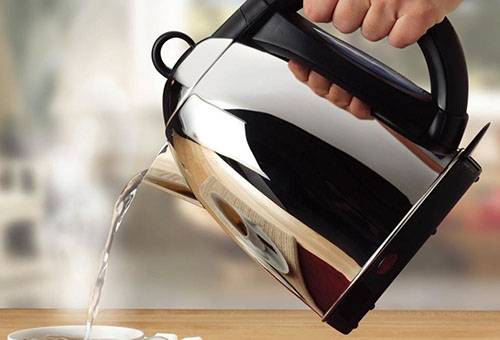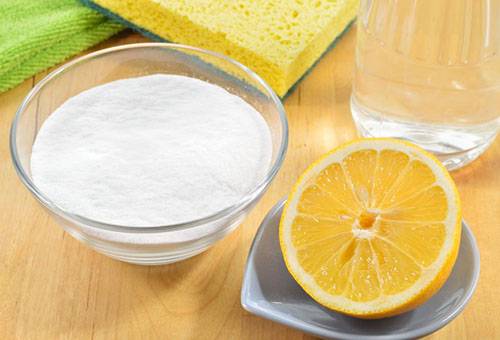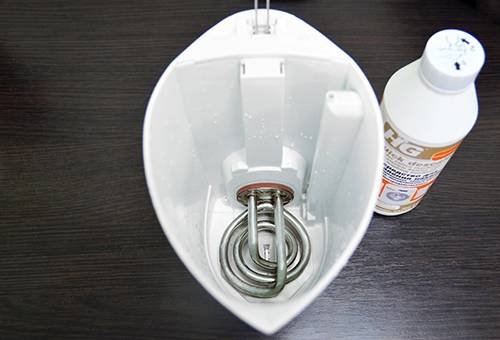How to descale an electric kettle?
Content:
Regular boiling of water with a high salt content in heating devices leads to chemical reactions, as a result of which the inner surface of the functional containers is covered with a dense coating. If you do not know how to clean the kettle from scale, there is a risk of reducing the quality of the device. As the stone formation thickens on the surface of the functional element, it begins to heat water more slowly. After some time, the device ceases to give off heat to the surrounding fluid and heats up from the inside. As a result, the mechanism burns out and the product becomes completely unusable. In order to prevent such a development of events, you need to get rid of the signs of a problem that have appeared in time, by conducting a simple but effective cleaning.
Limescale Prevention
Compliance with a number of rules will prevent the transition of physical and chemical processes into a negative phase. In this case, the scale in the electric kettle simply does not appear:
- Clean the inside of the appliance every day. To do this, use a soft sponge, which cleans a thin coating. However, it is not recommended to use even the safest chemicals.
- Before boiling, it is advisable to clean the water from excess salts by filtering or settling.
- Unused boiled water must be poured out of the tank. You can’t leave liquid in the kettle even for several hours, and even more so, all night.
If you cannot remove scale in an electric kettle or prevent its appearance, you should not wait until the plaque turns into a dense stone layer. The thinner the education, the easier it is to get rid of it.
The most effective descaling methods
The formation of even a very dense salt coating is not yet a sentence. At home, traditional folk remedies and unusual innovative techniques will provide invaluable help. The main thing is not to try to get rid of the problem with the help of mechanical cleaning. Attempts to scrape off the salt with a knife will not help to completely remove the scale, but it can lead to damage to the heating element or to a violation of the tightness of the kettle.
- Acetic acid cleaning (for metal dummies). The product enters into a chemical reaction with salts, destroying intercellular bonds and leading to the decomposition of complex compounds into simple ones. First, fill the teapot with two-thirds of filtered or drinking water. Add a third of 9% vinegar and turn on the appliance. After boiling water, leave it to cool and check the quality of salt discharge. If the result is satisfactory, thoroughly rinse the container, repeatedly changing the water. Leave it open until completely dry.
- Cleaning with citric acid. We breed a couple of teaspoons of citric acid in a liter of water. Pour the liquid into the kettle and bring to a boil. After that, the inner surface can be easily washed from scale, often the coating completely dissolves and you just need to drain the liquid. So that citric acid does not remain on the elements and walls of the container, it is necessary to pour clean water into it, boil and drain once.
Tip
The listed options with citric and acetic acid are the most aggressive methods. They are recommended to be used extremely rarely, only in those cases when the plaque could not be removed using more gentle approaches.
- Sweet sparkling water. Drinks, famous for their “unique” composition, quickly get rid of the most resistant scale.You just need to take a suitable product, pour it into any container and defend until the bubbles disappear. Then pour the liquid into the kettle and boil it once. You need to use a colorless drink, otherwise the inside of the teapot, and with them all the drinks run the risk of turning into a specific color.
- Soda. Pour a full teapot of water, add a tablespoon of baking soda to it and mix thoroughly. Bring the liquid to a boil and drain. If the scum does not go away, it will become very loose and it can be easily removed with a soft sponge. If necessary, repeat the approach.
- Brine. We take a liter of fresh brine from cucumbers or tomatoes, filter through several layers of gauze and pour into a kettle. We follow the usual pattern - boil the product, drain and rinse the kettle. It is worth considering that in some cases, after this approach, a strong smell remains on the inner surface of the container, which is difficult to remove.
- Cleaning Application. Unusual, but according to reviews quite an effective option with an average and small thickness of the salt layer. We thoroughly rinse the potato peelings, there should be no sand on them. We put them in a kettle, pour water and boil. To increase the effectiveness of the approach to potato peeling, you can add apple.
If the above methods did not help get rid of the problem, the risk of irreversibility of the process is high. This happens when the heating element is so corroded by scale that it is not able to start the necessary chemical processes, even if the water boils. Or the case is corroded so much that it is not able to retain the desired heat. In this case, it is easier to purchase a new device.
Pros and cons of using household chemicals
Today, a lot of tools have appeared on the household chemicals market designed to eliminate the problem of salt deposits. Before scaling an electric kettle with the help of similar products, you need to consider that it is not known what chemicals are included in their composition. These powders, gels and liquids are really easy to use and affordable, but they do not always give the desired result, and sometimes even lead to a breakdown of the kettle. It is better to try more traditional methods first, and leave such a radical tool in the end.



